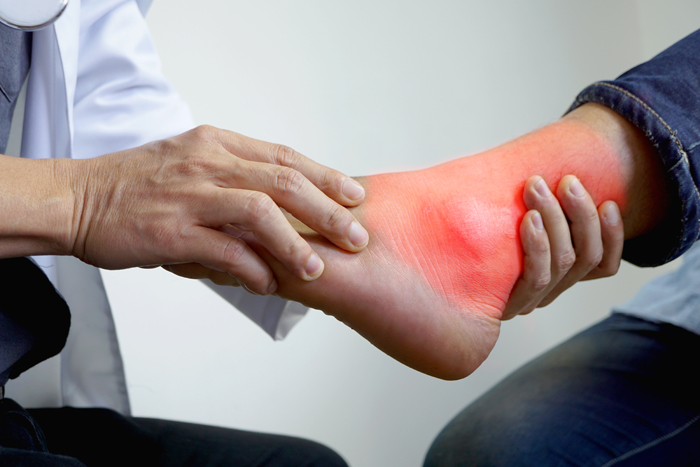Best Ankle Arthroscopy Procedure in MRC Nagar, Chennai
Arthroscopy is a minimally invasive procedure during which orthopedic surgeons use magnifying lenses, fiber optics and digital video screens to examine the inside of a specific joint.
The term, arthroscopy, means to “look inside a joint”. Also referred to as keyhole surgery, this procedure effectively diagnoses and cures problems in the various joints of your body, one of them being the ankle joint.
To avail of this procedure, consult an orthopedic surgeon near you or visit an orthopedic hospital near you.

What is ankle arthroscopy?
Ankle arthroscopy uses an instrument called an arthroscope (a thin fiber-optic camera). It magnifies and transmits pictures of your ankle to a video monitor.
After giving anesthesia, the surgeon makes two incisions in the front or back of your ankle. These incisions are entry points for the arthroscope and other instruments. Sterile fluid circulating through the joint gives a clear view of the joint.
Once the diagnosis or treatment is complete, the surgeon closes the incisions with sutures.
Who qualifies for this procedure?
People who are suffering from numerous ankle conditions like osteochondral injuries or ankle arthritis benefit from this surgery. Also, those who suffer a fracture or sprain in their ankle qualify to have an arthroscopy.
If a surgeon needs to inspect the inside of your ankle and repair ligaments and tendons, you may need to undergo this advanced orthopedic surgery.
Request an appointment at Apollo Spectra Hospitals, MRC Nagar, Chennai.
Call 1860 500 2244 to book an appointment.
Why is ankle arthroscopy performed?
Orthopedic surgeons perform ankle arthroscopy to identify or repair the following ankle conditions:
- Ankle pain: Arthroscopy allows a surgeon to identify the root cause of your ankle pain.
- Arthrofibrosis: It develops when scar tissue forms inside your ankle. It leads to pain and stiffness. This procedure can help in removing scar tissue.
- Ligament tears: Ligaments are bands of tissues, which keep your ankle stable and facilitate free movement. Arthroscopy can repair tears in ligaments.
- Arthritis: Arthroscopy helps in pain relief and improves the range of movement in patients with arthritis.
- Ankle impingement: Your ankle tissues can get sore and suffer swelling due to overuse. It can restrict your movement. With arthroscopy, surgeons can remove the tissues for ease of movement.
- Synovitis: The synovium is the protective tissue that lubricates a joint. When this tissue suffers inflammation, it can cause severe pain and stiffness. With arthroscopy, doctors can treat synovitis.
- Loose fragments: Pieces of bone or cartilage within your ankle can cause the joints to become stiff. Surgeons remove these fragments with the help of arthroscopy.
- Cartilage injuries: This procedure can diagnose or repair bone or cartilage injuries.
What are the advantages of arthroscopy?
- Relief from the persistent joint pain
- Small incisions, so healing faster
- Hardly any surgical scars
- Your range of motion improves, so you are more active
- Reduced chances of infection at the surgery site
- Less complications
- Shorter stay at a hospital
- Helps in the treatment of multiple ankle conditions
Can arthroscopy lead to any complications?
Arthroscopy is a safe procedure and complications are highly uncommon in this case. There can be a few such as:
- Blood clots: Surgeries that last for more than an hour sometimes raise the risk of blood clots in your lungs or legs.
- Tissue or nerve damage: The movement of surgical instruments inside the joint can cause damage to the tissues and nerves of the joint.
- Infection: Like most surgeries, there can be a chance of infection.
Other issues can be slow healing, failure of surgery and long-term weakness in your ankle.
What post-surgery precautions should I take?
- Keep your ankle in an elevated position. It helps reduce the pain and swelling. You can also use an ice pack.
- Take pain-relieving medicines only if your doctor prescribes them.
- Keep the bandage clean and do not miss dressing the wound.
- Your doctor may advise you to wear a boot or splint to support your ankle.
- Use a walker or crutches to prevent putting pressure on your ankle till your doctor allows you to do so.
Conclusion
In most cases, the outcome of an ankle arthroscopy is excellent. But, do remember that several factors contribute to the success of this surgery. These include the severity of your ankle problem, the complexity of the surgery, the post-surgical rehabilitation process and your compliance with the surgeon’s instructions.
The swelling in your foot and ankle may take approximately three months to go away. If you are into sports, it might take several months before the doctor allows you to indulge in any sports activity. Also, if your job involves heavy lifting or manual labor, you will have to wait till you can resume work.
After the surgery, if you notice any of the following signs, inform your surgeon:
- Fever
- Redness or increase in swelling
- Drainage from your incision
- Numbness
- Pain that does not subside through medicine
One of the key advantages of a minimally invasive surgery like arthroscopy is low surgical pain. The incisions are tiny, which heal fast, and with the help of medications, you recover faster.
You must notify your doctor if you:
- Have a heart condition, diabetes or any other health problem.
- Smoke or consume alcohol because these habits can slow bone healing.
- Take any blood-thinners or any other medicines, supplements.
- Develop flu, cold, an allergy or any other health issue.
Symptoms
Our Top Specialities
NOTICE BOARD
CONTACT US
CONTACT US
 Book Appointment
Book Appointment


.svg)
.svg)
.svg)
.svg)








